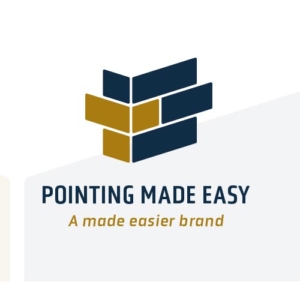How Banking Process Automation Can Transform Your Financial Institution
With RPA, banks can create violation letters automatically for any questionable transaction. From process mapping to document generation, automation streamlines processes, alerting customers faster. O’Reilly has found that many banking institutions struggle with where they can initiate their intelligent automation strategy even when they understand the benefits. In this case, it is critical to start small and focus on the value that can be delivered before deploying intelligent automation across the board. It is important to first find manual processes that could stand to improve through the efficiencies brought on with intelligent process automation. The best way to look at intelligent automation in the future is as a solution that can deliver improvements across the entire customer journey.
RPA can further help automate many repetitive tasks across discrete legacy systems. Combining RPA with AI-enabled automation and BPM can help to deliver more consistent services at a lower cost while ensuring regulatory compliance and deeper analytical insights. Digital transformation can address operational challenges and introduce the most-sought after elements; efficiency, agility, and resilience to banking operations. Going completely digital will also enable banks to get rid of old-school paper trails and manual labor. A 2021 McKinsey study found that when automating the account switching process in a European bank, over 70% of applications were paper-based. These kind of inaccuracies affect profits, operational performance and trigger customer dissatisfaction, emphasizing the need for digital transformation in banking.
What are the challenges for banks today?
These new banking processes often include budgeting applications that assist the public with savings, investment software, and retirement information. Customers want to get more done in less time and benefit from interactions with their financial institutions. Faster front-end consumer applications such as online banking services and AI-assisted budgeting tools have met these needs nicely. Banking automation behind the scenes has improved anti-money laundering efforts while freeing staff to spend more time attracting new business. The key to an exceptional customer experience is to prioritize the customer’s convenience wherever possible.

Applying intelligent automation across the trade finance process from digitalization, sanctions screening and fraud checks, to customer communications, reporting, and audit. Manual processes also make it difficult to oversee any changes and track the status of the financial close. Incorporating task management software allows individuals the ability to monitor tasks, add comments, and supervise the completion of the financial close. Following the intricate process at hand not only allows managers to track close progress and performance of employees but establish clear lines of communication that are needed to streamline the financial close. We’re ready to answer all your questions and show you why we’re the solution of choice for banks and financial institutions.
Step 2: Loan Application Review and Approval
With a team of seasonal full-stack app developers, we design and develop best-in-class android and iOS apps at your budget for rpa automation in banking / rpa in banking sector. With the trend of business partnerships and acquisitions continuing to rise in the banking and finance industry, the need for RPA-based tech solutions is high. Adopting RPA applications for managing stakeholders or employees across the branches is an appreciable move for banks.
What is automation of banking operation?
Banking automation helps devise customized, reliable workflows to satisfy regulatory needs. Employees can also use audit trails to track various procedures and requests. Client Services. Digital transformation and banking automation have been vital to improving the customer experience.
Discover how we can improve your workforce productivity and manage your operating expenditures. Companies collect a wide range of information from their customers, encompassing personal data, engagement data, behavioral data, and financial information. Personal data includes contact details, residential information, and government-issued identification….
Drive success with finance automation
As early adopters of Robotic Process Automation, banks are currently institutionalizing the use of robotics with the help of Digital Workforce. This involves deploying robotics from the cloud and implementing advanced metadialog.com support and maintenance models to enable value generation from robotics on an industrial scale. Banks are also looking to expand the scope of automation through orchestration of RPA and Artificial Intelligence (AI).
- For example, professionals once spent hours sourcing and scanning documents necessary to spot market trends.
- RPA can easily automate these repetitive and rule-based operations, resulting in a maximum reduction in process TAT.
- Banks planning to incorporate hyper automation technology into their financial domain need to understand exactly what the phrase refers to.
- Automation is being utilized in numerous regions inclusive of manufacturing, transport, utilities, defense centers or operations, and lately, records technology.
- A state in which automation and digitization are continuously being restated upon and optimized.
- Update your browser for more security, speed and the best experience on this site.
And it is also a great example of how banking has always been an innovative industry. The challenge of maximizing efficiency and keeping expenses as low as feasible while ensuring maximum security standards has also drastically increased. Robotic Process Automation (RPA) has evolved into a powerful and effective technology to meet these expectations. Around 80% of finance leaders have implemented or are planning to implement RPA (Gartner).
Accelerate growth, improve experiences
But in the meantime, they must continue managing legacy back-office processes using antiquated systems that require manual labor. Banks only have so many resources and hours in a day so they need fast, easy-to-implement solutions that generate immediate cost savings. Using our banking workforce and RPA solutions, AIS helps financial institutions stay focused on their strategic journey while we manage the mundane.
Alert investigation is also time-consuming, while up to 85% of daily alerts are false positives, and around 25% need to be reviewed by level-two senior analysts. With all the efforts, banks are losing €50 million per year on KYC compliance sanctions. Since Societe General Bank Brazil incorporated RPA for report generation into their processes, they automated a workflow that previously demanded six hours of employees’ working days.
Bank Reconciliation Processes
Banks have a lot of internal back-office processes that benefit from automation. For our customer POP Bank we have automated processes regarding reconciling data, confirming and archiving interbank transactions and processes related to the bank’s internal control, like confirmations and reports. Most of these are time-consuming, tedious legislative processes that create little value. Removing this manual work from the employees increases employee satisfaction and frees up their time for more meaningful and value-adding work. Automation also improves process quality and speed as robots work tirelessly 24/7 and without making humane errors.
For example, you can add validation checkpoints to ensure the system catches any data irregularities before you submit the data to a regulatory authority. According to the 2021 AML Banking Survey, relying on manual processes hampers a financial organization’s revenue-generating ability and exposes them to unnecessary risk. Using automation to create a cybersecurity framework and identity protection protocols can help differentiate your bank and potentially increase revenue. You can get more business from high-value individual accounts and accounts of large companies that expect banks to have a top-notch security framework. A big bonus here is that transformed customer experience translates to transformed employee experience.
Automated payment operations
For the first time, the end-to-end automation of the highest-volume manual requests is possible. Truth in Lending Regulation Z, Federal Trade Commission guidelines, the Beneficial Ownership Rule… The list goes on. With a dizzying number of rules and regulations to comply with, banks can easily find themselves in over their heads. Credit-as-a-Service solution connected brands, merchants, and buyers and provided them with unique shopping & selling experience.
How automation is changing the banking industry?
The introduction of technologies such as ATMs, mobile banking apps, internet banking, etc. is some of the most common examples of automation in the banking industry. Automation is prominent not only in the areas of financial transactions but also in operations, marketing, human resource operations, and many more.
What is an example of banking operations?
Banking operations include the issuing of loans, customer support activities, stock trade, documentation, investment analysis and retail operations.































